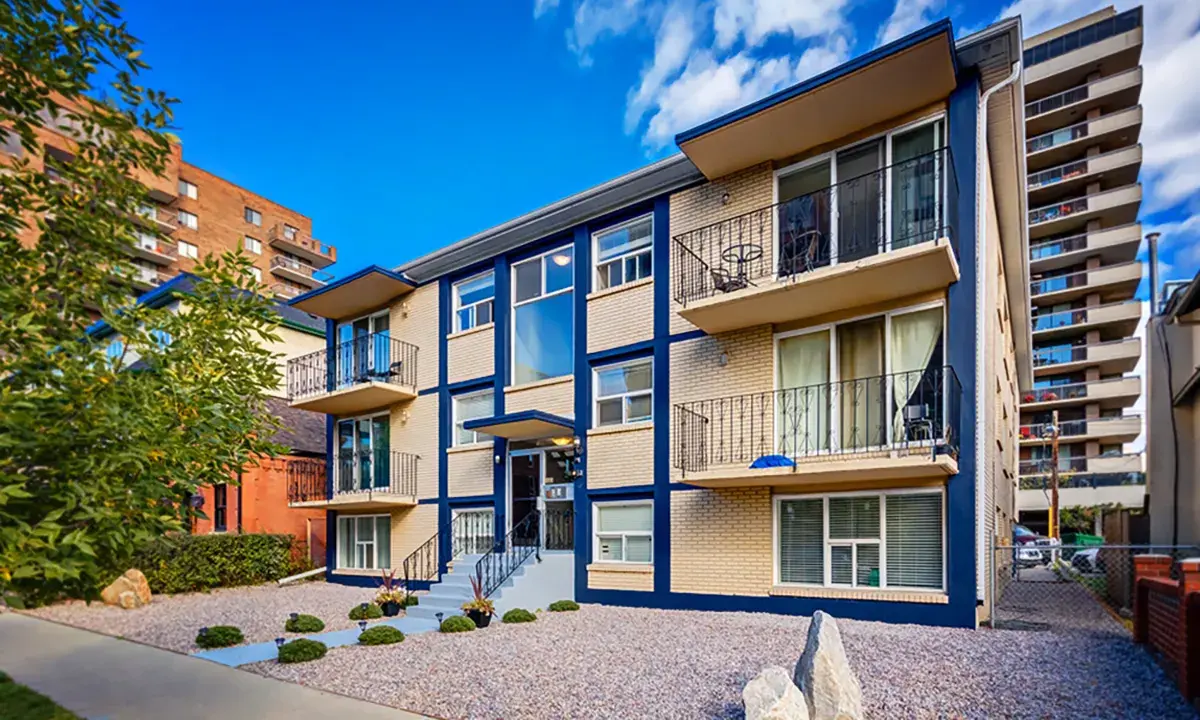In With the "Old"

Why vintage apartments – rather than new builds – are a smart investment
It might seem that newer is better when it comes to real estate, but that’s not always the case. And there are plenty of reasons why investing in older buildings – those built in the 1970s and 1980s, for example – could be a better bet than more recent builds.
For starters, the cost per square foot of Canadian multi-family purpose-built apartment buildings is below the cost of newly built rentals and newer condominium developments, largely due to rising construction prices. Older purpose-built apartments in several major markets in Canada have been selling at prices between $250 and $350 per square foot while new builds sell for approximately $400-$750 per square foot.
Also, these vintage properties account for the majority of the rental universe in Canada. They continue to serve as the foundation of the rental market despite being built in the previous century. With high levels of stock of older purpose-built apartments and a need for these economically priced rental homes for the workforce housing demographic, it makes for an attractive and plentiful opportunity.
“We invest in class B and C buildings which perform well in normal times, and exceptionally well in economically challenging times,” says Michael Rossi, Investment Associate for Avenue Living Asset Management. Nothing has proven this philosophy more clearly than the past eight months, when a pandemic has upended our economy and fundamentally changed how many of us live. These assets, and our strategy of targeting essential workers, have weathered the storm exceptionally well.
All the Marks of a Good Performer
Why do these older assets perform so well? Several reasons, including that the market for multi-family rental apartments in Canada has benefitted from a supply shortfall, driven by continued growth in rental demand and a lack of new inventory.
These buildings are often overlooked, and they can be acquired for a price that allows us to potentially earn higher yields thanks to their initial affordability. In addition, there are other factors that make them attractive to renters, which boosts the potential for stable occupancy:
- Location: These buildings are often in ideal locations – close to hospitals, employment hubs and education. We look for strong, diverse markets that also have vibrant sub-markets within that city.
- Suite Size: These locations often have larger suite sizes than newer condominium builds — suites are usually 900-950 square feet as opposed to the 700 square feet average for two-bedroom suites in newly constructed condominiums.
- Construction: Low density class B & C older buildings have simpler design characteristics which require a reduced amount of CAPEX and maintenance costs.
- Parking: Older buildings tend to have more parking stalls per unit than newer builds.
Capital Improvements Boost Value
Being strategic with our purchases also means we can be strategic with our capital improvements. These improvements present the opportunity for more stable occupancy, ultimately allowing us to collect stable rents and generate income.
“We track a margin of safety between acquisition cost of class B and C assets and replacement cost,” says Michael. “If we can buy something for $100, for example, which would cost $120 to build, we can be more competitive on rental rates. Then Avenue Living can focus on the capital improvements that renters want and are willing to pay for.”
What renters expect are safe, secure, and comfortable buildings. Those are the basics we expect, too. The capital improvements ultimately provide the opportunity for an increase on ROI for investors.
A Platform for Success
A strong operating platform and the availability of capital gives investors an opportunity to reduce operating expenses and generate rental growth. Publicly listed Canadian REITs with a strategy of repositioning properties, actively managing rents, and reducing operating expenses have averaged eight to 12 per cent annual net operating income (NOI) growth – a number consistently exceeded by Avenue Living’s Core Trust platform – a private alternative real estate investment vehicle.
Avenue Living Asset Management benefits from a vertically integrated platform, which gives us access to property management infrastructure, including the call centre, facility maintenance, and in-house marketing, legal, and accounting to support our investments. So, we can make the most of our acquisitions and bring value not just to our investors, but to the residents and communities in which we operate.
This commentary and the information contained herein are for educational and informational purposes only and do not constitute an offer to sell, or a solicitation of an offer to buy, any securities or related financial instruments. This article may contain forward-looking statements. Readers should refer to information contained on our website at www.avenuelivingam.com for additional information regarding forward-looking statements and certain risks associated with them.



